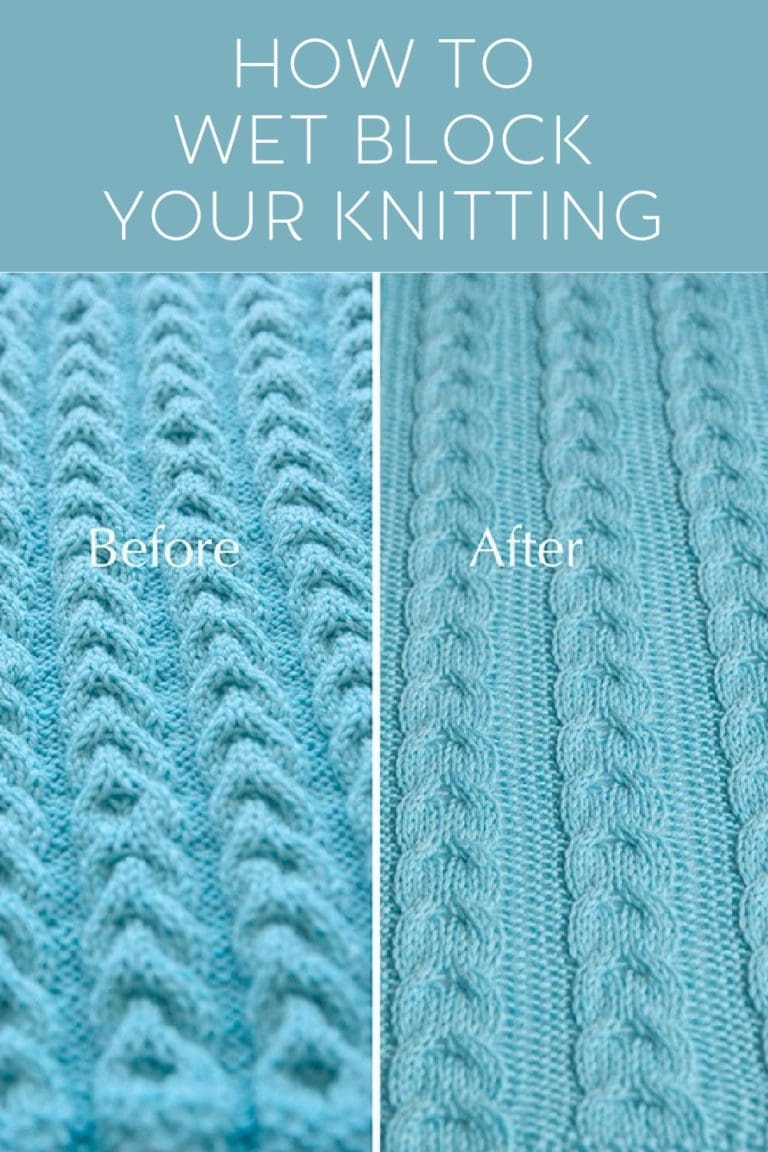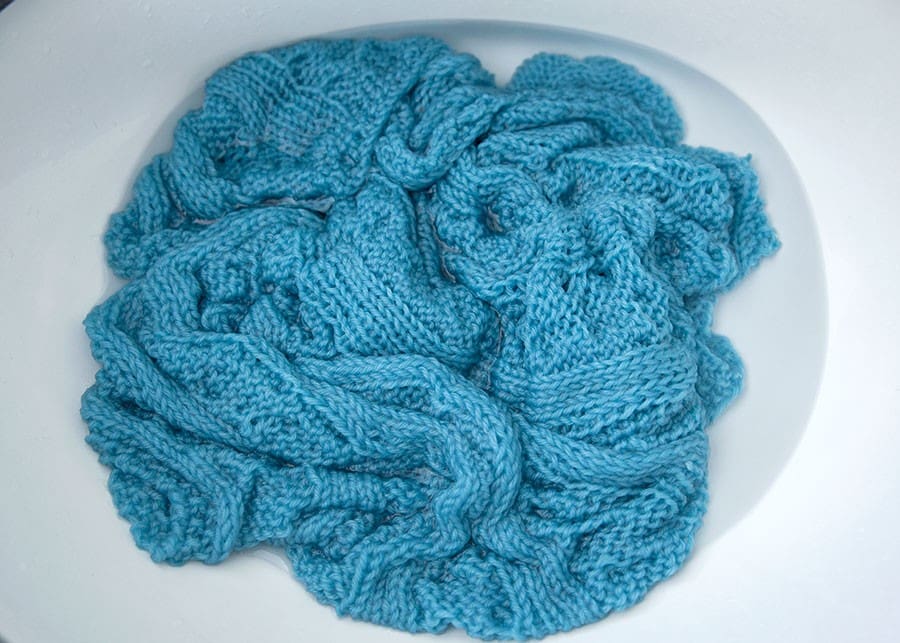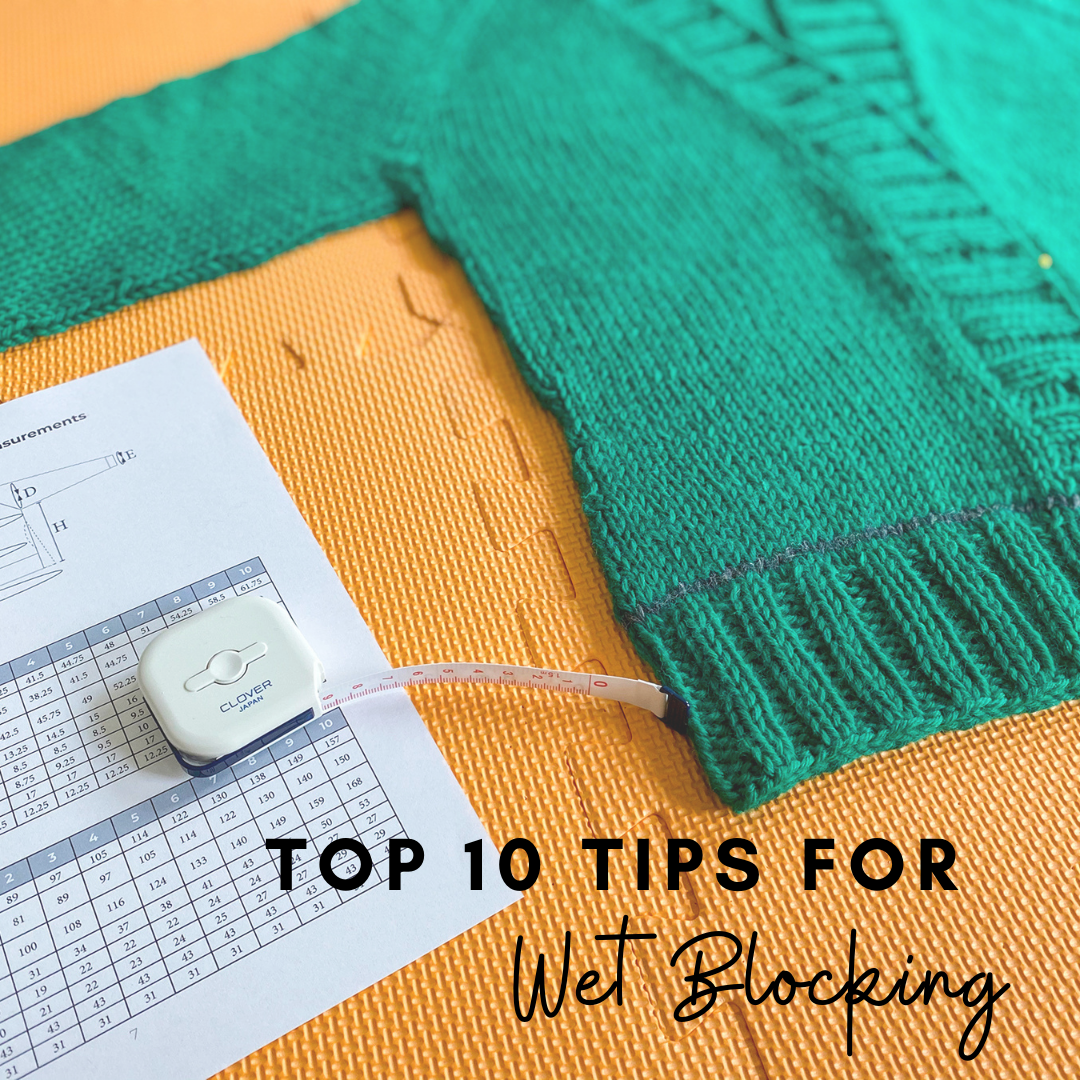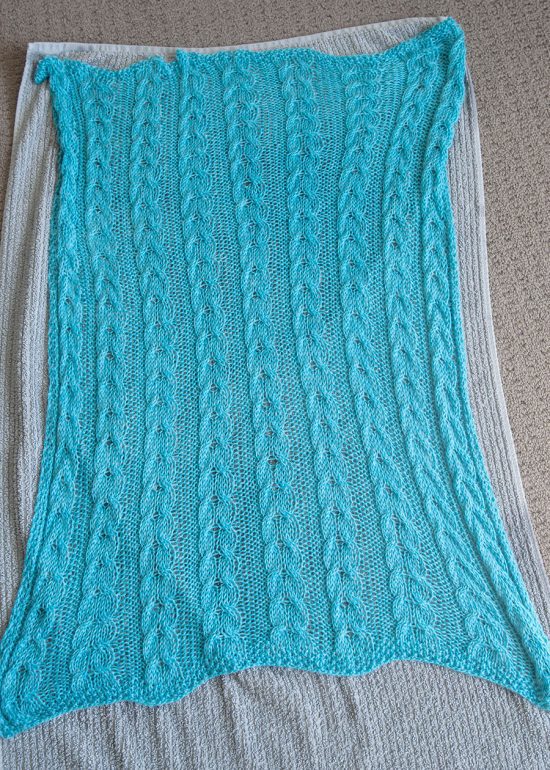Wet Blocking Knitting
Wet Blocking Knitting - Web if you are knitting with a yarn that has a lot of body or bounce, such as wool or alpaca, wet blocking can help to relax the fibers and give the finished item a softer, more flowing drape. After being in your hands, in your knitting bag, and all over your house, your garment probably needs a little cleaning. Wet blocking is a valuable technique that can help you res. Web blocking is a process used in knitting to help even out stitches. It helps to have a flat surface to lay your garment on, and one that will absorb the wetness as well as withstand sticking pins into. Doing so may distort the stitches beyond correction. This can be especially important for items like shawls, scarves, or cardigans that are meant to drape over the body. Before wet blocking anything, check its label for instructions to avoid causing any irreversible damages to it. Place knitting in and let soak in for 15 minutes. Here’s a quick summary of how each method works. Steam, wet and spray blocking. Web mix with one tsp of detergent to 1 gallon of water. A finished swatch or project is exposed to water and laid out to dry, often using pins or w. Web there are three main ways to block a knitting project: How to wet block your knits. Web if you haven’t experienced the beauty of blocking, or feel like you could learn more, this is the tutorial for you! Steam, wet and spray blocking. In the first step, you'll submerge your knitting in water. A finished swatch or project is exposed to water and laid out to dry, often using pins or w. Scroll to the bottom. Weave in all loose ends. Web you make a project wet, it becomes a bit more malleable, and then pin it into the desired shape, and as it dries, the newly formed hydrogen bonds will ensure that it will keep the shape (until it gets wet again). A finished swatch or project is exposed to water and laid out to. Use blocking pins and leave it to dry. Julie takes you through the process of wet blocking a sweater step by step. Web there are 3 methods of blocking: During its first wash, a knitted garment will undergo a profound change — for a woolen handknit, the fibers will plump up and cohere into a beautifully even and sturdy fabric.. Place knitting in and let soak in for 15 minutes. Blocking your finished knitting project makes a big difference in the appearance of your project! Before wet blocking anything, check its label for instructions to avoid causing any irreversible damages to it. So, anything shorn/obtained from animals. Gently squeeze the water out or place in a. Wet blocking is a valuable technique that can help you res. Web there are 3 methods of blocking: Soak your knitted item in gentle wash per the yarn label instructions. Web you make a project wet, it becomes a bit more malleable, and then pin it into the desired shape, and as it dries, the newly formed hydrogen bonds will. Scroll to the bottom of this post and see a couple before and after comparisons. Web you make a project wet, it becomes a bit more malleable, and then pin it into the desired shape, and as it dries, the newly formed hydrogen bonds will ensure that it will keep the shape (until it gets wet again). Gently squeeze the. So, anything shorn/obtained from animals. You can wet the fabric either by soaking it in a sink or basin full of water, or by laying it flat and spraying it with spray bottle until the fibres are very wet. Wet blocking is a valuable technique that can help you res. You’ll start by soaking your finished project in water and. Mix up with your hand in a clean sink or basin. You’ll start by soaking your finished project in water and then shape it into the desired dimensions. Experiment with blocking your gauge swatch before you block an actual knitted piece. Wondering if your project really needs to be blocked? Use spring or filtered tap. Join me while i block my latest scarf project and see how easy it is! Web are you confused about wet blocking? If you have ever washed a wool sweater, and let it dry flat, gently reshaping it, you have already done a mild version of blocking. Julie takes you through the process of wet blocking a sweater step by. Wet blocking, steam blocking, and spray blocking. The blocking process will help secure the ends in place. Web wet blocking is when you submerge your finished knit into water (usually with a little bit of wool wash like eucalen) and then let it soak in the water for about 15 minutes (the above photo shows this phase). Experiment with blocking your gauge swatch before you block an actual knitted piece. A rule of thumb is to wash the knitted garment according to the washing instructions on the yarn label. During its first wash, a knitted garment will undergo a profound change — for a woolen handknit, the fibers will plump up and cohere into a beautifully even and sturdy fabric. Wet blocking involves submerging your project in w. Web mix with one tsp of detergent to 1 gallon of water. Web there are 3 methods of blocking: The wet blocking process will actually help lock in the weaved in ends. Then you gently take it out of the water, roll it in towels until your knitted piece feels just damp (not wet), and then lay it flat to dry. Web you make a project wet, it becomes a bit more malleable, and then pin it into the desired shape, and as it dries, the newly formed hydrogen bonds will ensure that it will keep the shape (until it gets wet again). Web there are three main ways to block a knitting project: While your item is soaking, set up the surface that you will be using for blocking. Place knitting in and let soak in for 15 minutes. Web methods to wet blocking your knitting or crochet project are discussed and demonstrated in this tutorial video.methods are:
How to WetBlock Knitting

WET BLOCKING 101 HOW TO WET BLOCK A SHAWL [Step By Step Guide to Block

How to wet block your knits DONNAROSSA

Wet Blocking Kelbourne Woolens

How to Wet Block your Knitting Leelee Knits

How to Wet Block your Knitting Leelee Knits

How to Wet Block your Knitting Leelee Knits

How to Wet Block your Knitting Leelee Knits

Top 10 Tips for Wet Blocking Elizabeth Smith Knits

How to Wet Block your Knitting Leelee Knits
In The First Step, You'll Submerge Your Knitting In Water.
Web Here Are My Favorite Tools:
Use Spring Or Filtered Tap.
Gently Squeeze The Water Out Or Place In A.
Related Post: